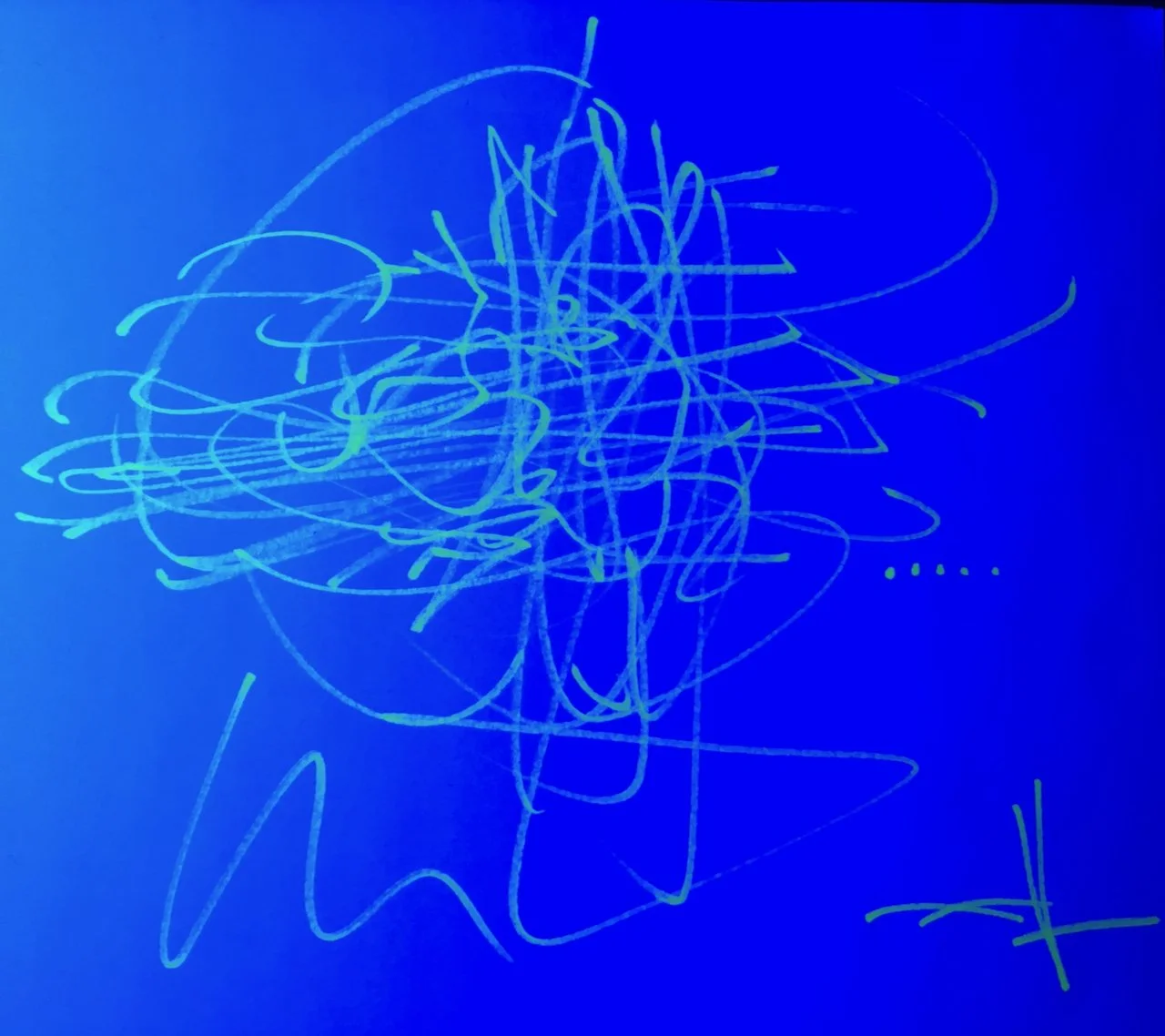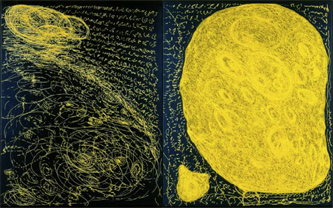
I was recently interviewed by Haydn Shaughnessy, columnist for the Irish Times on the art market and its phenomenal appreciation in the past year, particularly in the contemporary market. My take from the article:
That pessimistic note is not shared by art dealer and financier Mark Beam. Still involved in the world of finance, Beam was previously a stock-market trader in New York, the breed of investor that some argue has contributed to the putative art bubble."There will be a correction because that's the way markets behave, but underneath all that, the internet is making it easier for people to build a consensus around iconic images and to desire them," he argues. It is a point underlined by developments in the art market....Values in the market for contemporary artists have risen 111 per cent in the past 12 months. If a combination of those forces referred to by King - more people now like art - and by Beam - the internet creates consensus around icons - then rather than straining at a gossamer-thin bubble, the art market could be in for more of the same, driven by a more visually eager world.Time to roll out the contemporary art fund business plan I wrote 2 years ago....Here's the
full article:
Prices for well-known pieces are going through the roof at art auctions, but is this just a bubble or simply an indication of growing demand for contemporary work, asks Haydn Shaughnessy.
When the hammer fell on William Percy French's The Mountains of Mourne in the May auction of Irish artists at Bonham's this year, the sale price of €25,000 was six times the anticipated value. Paul Henry's Dooega, Achill Island, slated at €40,000, sold for €260,000.
Around the world the auction house Christie's spent the summer of 2007 setting new record prices for living and modern artists, recording global sales of £1.63 billion (€2.4 billion) for the first six months of the year, a rise of 32 per cent on last year's figure. Equally significant was that a total of 358 works sold for more than $1 million (€730,000), compared with 189 auctioned above that price during the same period last year.

It is already popular wisdom to suggest that these rises are the sure signs of an art bubble. Perhaps also indicative of a kind of fever is that record prices are being achieved by obscure objects, such as the French designer Prouvé's kit-form house, a prefab designed for colonists in Brazzaville, which, except for three prototypes, was never actually built. One sold at auction in July for almost $5 million (€3.65 million). At the start of 2007, before Christie's remarkable rise in revenues, the International Herald Tribune was already asking if this market was a bubble ready to pop. (Image by
Michael Grey, not part of the original article)
On the issue of an art bubble, there are dissenting views and they come not only from the auction houses prospering from rising values. According to Irish fine-art expert Mark Adams: "Look at 19th-century Irish paintings which were popular five years ago. Today you can't sell a 19th-century Irish painting. Taste has moved to the front end of the last century." As well as a bubble, investors need to be aware of fickle tastes.
There are three main reasons for price rises globally, according to experts at auctioneers Christie's. "There is a broader spread of wealth and it goes very deep," says Lisa King, international managing director at the firm.
"All emerging markets - China, Russia, India, the CIS and Middle East - are buying into anything contemporary. First they buy their national ilk, Chinese buyers buy Chinese artists, but then they move to other markets. But also people are more interested in art."
Could the real driving force in rising art values be not simply the spread of hyperwealth but an extension of the art-loving audience? In an article in the Art Newspaper earlier this month, New York gallery director and critic Jane Kallir argued that the art market has risen because of a structural imbalance within the art world.
"For the past century or so, the art world has been supported by four principal pillars: artists, collectors, dealers and the art-historical establishment (critics, academics, and curators)," she writes. "Now, it seems, collectors have taken charge. Over the long term, art-historical value is determined by consensus among all four art-world pillars. When any one of the four entities assumes disproportionate power, there is a danger that this entity's personal preferences will cloud everyone's short-term judgment. Put bluntly, the danger of a collector-driven art world is that money will trump knowledge."

Art, argues Kallir, has become the common denominator in the social lives of the rich, making the odd masterpiece. That pessimistic note is not shared by art dealer and financier Mark Beam. Still involved in the world of finance, Beam was previously a stock-market trader in New York, the breed of investor that some argue has contributed to the putative art bubble. (image by
Michael Grey, not part of the original article)
"There will be a correction because that's the way markets behave, but underneath all that the internet is making it easier for people to build a consensus around iconic images and to desire them," he argues. It is a point underlined by developments in the art market.
Green Car Crash by US pop-artist Andy Warhol, whose career was not predicted to rise posthumously into the stratosphere, sold for $71 million (€51 million) this summer. Warhol has ridden the crest of the recent price rises and he is precisely the type of artist whose work features around the internet. "The headlines are very much focused on the modern and contemporary markets," argues Christie's Lisa King, "but the rest of the market has had a more steady and much more measured growth."
Values in the market for contemporary artists have risen 111 per cent in the past 12 months. If a combination of those forces referred to by King - more people now like art - and by Beam - the internet creates consensus around icons - then rather than straining at a gossamer-thin bubble, the art market could be in for more of the same, driven by a more visually eager world.
Indeed, the desire of many of the world's leading galleries to present their wares to a wider public is also part of this story, putting art on the agenda of an ever larger audience.
The Irish Museum of Modern Art's outreach programme is one example of taking art to the people. In mid-July, London's Tate Gallery launched the BT Tate Player, an online service providing access to a wide range of its collections as well as to interviews with artists recorded over a 30-year period.
The Tate's website now attracts 18 million visitors a year and gallery director Nicholas Serota wants to see it grow, arguing that public galleries have been slow to exploit the full potential of the internet to connect with wider audiences.
"We should be a leader in this field - there's this wealth of material which could be out there," says Serota. "Initiatives like [ BT Tate player] could change the way we think about programming our exhibitions and allow our audience to shape our programming more."
As a result of these advances, the Tate is beginning to think about how to establish communities of interest around certain artists and events. The Tate's new media director, Will Gompertz, cites the use of the photo-upload site Flickr and the social-networking site MySpace as two additional ways the gallery is reaching out to a wider public. Art, arguably, is coming under the democratising influence of the internet.
ANOTHER NOTABLE development, though, is the decision of key players in the art market to pursue the cutting edge of contemporary art. One feature of the June sales this year was the disposal of key works from the 1970s by the collectors Elaine and Melvin Merians so that they could refocus their collection on more contemporary artists. It signifies two features of the advancing art market. The first is the entry of more highly valued works in response to burgeoning prices. Now is the time to sell and some of the rapid rises in prices might also be explained by the fact that collectors, such as the Merians, have been tempted into releasing more valued works.
The second, however, is that the market is prizing contemporary works above all else. The very currency of works in a world of more rapid communications appears to be a factor.
Still, critics such as Jane Kallir are not convinced that, overall, the dynamic is itself of value. In her July excoriation of the market she complained: "This is a market with a voracious appetite for alleged masterpieces, and little patience for historical or developmental nuances."
If that argument holds water, then rather than anticipating an imminent financial collapse, the answer lies in a new kind of dialogue, one where the art-historical community comes to terms with the requirements of a new audience but perhaps also encourages that new audience to grow in aesthetic complexity. What we may be witnessing is not just a growing market, but one that is changed and won't readily fit back into its historical shape.
That certainly seems to be the case in Ireland. "For a while now everyone's waited for a collapse," says Mark Adams. "But I don't see that. There's enough power in the market and the market has grown long enough, for 10 or 15 years, for us to have to accept that these valuations are now justified."
If that holds true in Ireland, then you might ask why would it not in the rest of the world?
 Oliver Sacks who has lived in and written about Oaxaca recently wrote an article appearing in the NY Times entitled "Patterns." He writes:
Oliver Sacks who has lived in and written about Oaxaca recently wrote an article appearing in the NY Times entitled "Patterns." He writes: nnection too:
nnection too:
















